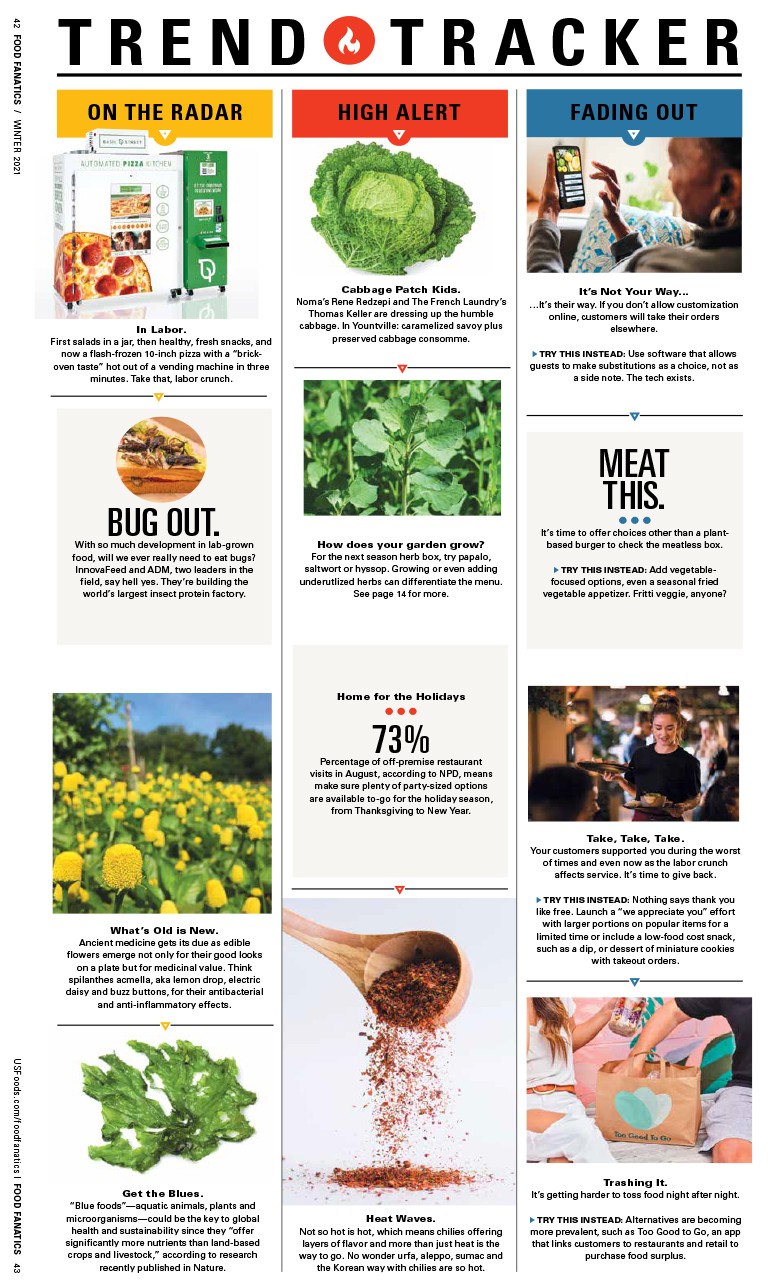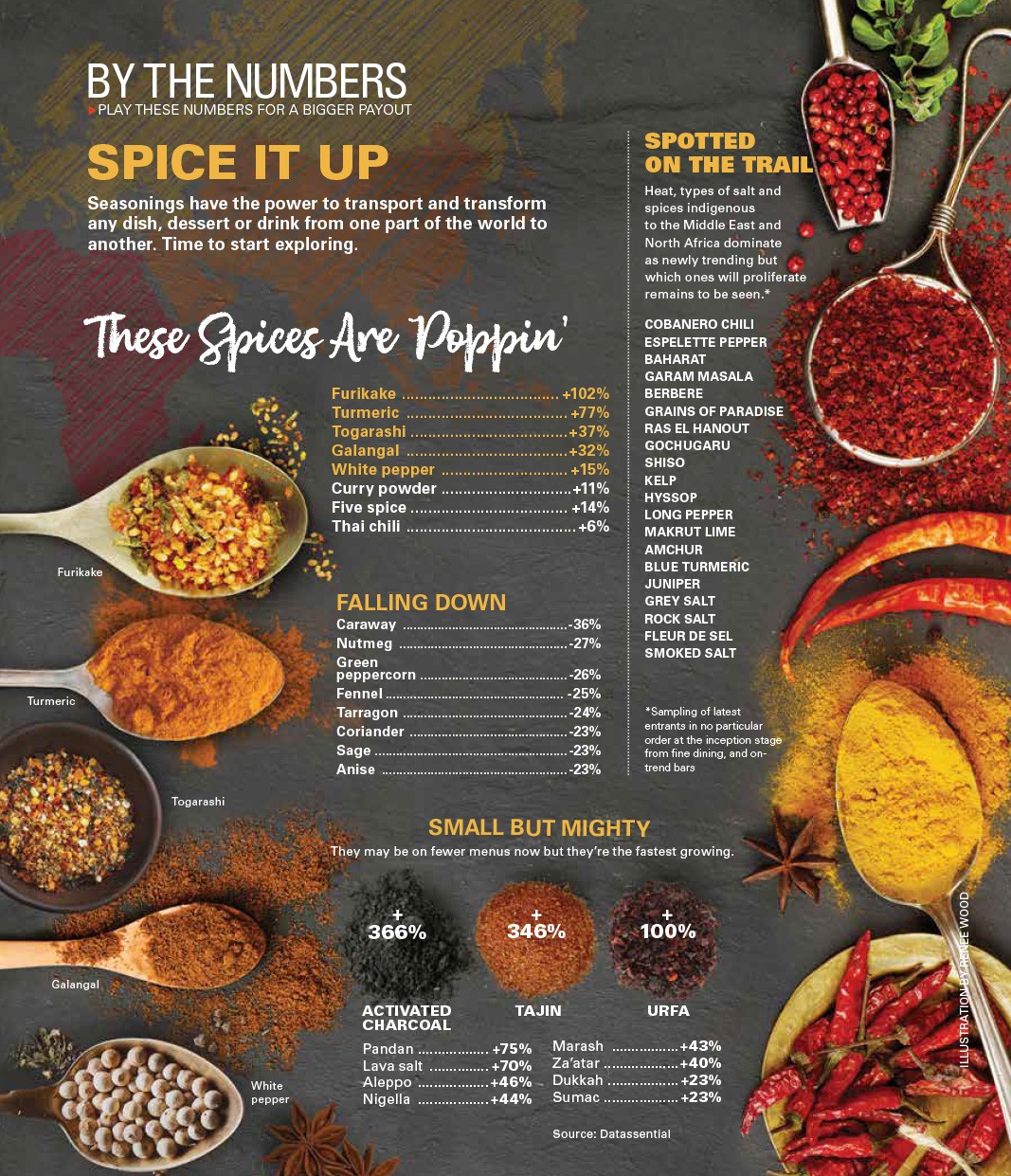BALANCING ACT
Toss or juggle the life-saving revenue streams from the pandemic?
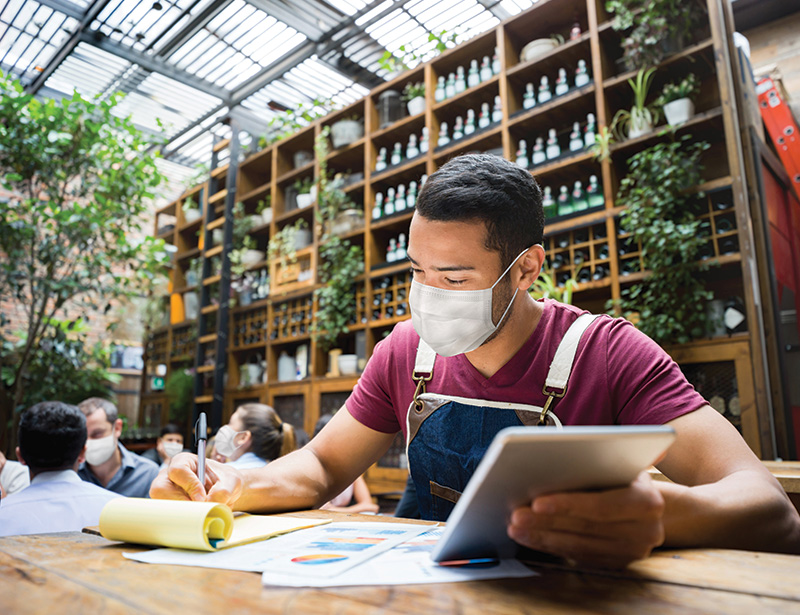 Pivoting on a dime – cutting staff, shifting operations and adding revenue streams from groceries, meal kits, takeout, delivery, virtual cook-along classes and even toilet paper – has kept restaurants afloat during the pandemic.
Pivoting on a dime – cutting staff, shifting operations and adding revenue streams from groceries, meal kits, takeout, delivery, virtual cook-along classes and even toilet paper – has kept restaurants afloat during the pandemic.
But changes that once helped could now hinder, as restaurants return to full-capacity indoor dining. Which additional revenue streams should remain? Which pivots should be abandoned? And how can restaurants staff appropriately and scale operations without breaking the bank and sliding backwards?
The answers, experts say, are not one-size-fits-all. Success in the next phase of pandemic recovery will depend on an operator’s ability to stick to a budget and at least break even, stay on brand, streamline operations, communicate well and above all else, remain nimble in the face of an ever-evolving public health landscape.
 STEP 1: Know Your Budget and Break Even
STEP 1: Know Your Budget and Break Even
Before any decisions about pivoting back can be made, certain financial benchmarks must be put in place. “The first thing you need to have, and this is not optional, is a budget and a break-even,” says Matt Vannini, a fourth generation restaurateur and the CEO of Restaurant Accounting Solutions Inc., which provides financial operational management services to restaurants.
“Without a budget to show you what you want to achieve for revenue and cost targets, and a break- even to show you what the floor is, you cannot know what decision to make in terms of labor and operations.”
Once you have your budget and break even, Vannini says it’s time to examine the pivots you’ve made to stay solvent and to determine which make sense to your brand and business.
 STEP 2: Find the Sweet Spot
STEP 2: Find the Sweet Spot
If your pivot is making money, experts say to keep it up, but monitor its impact. For instance, attitudes about dining may not shift back overnight, so the demand delivery and takeout may continue to evolve.
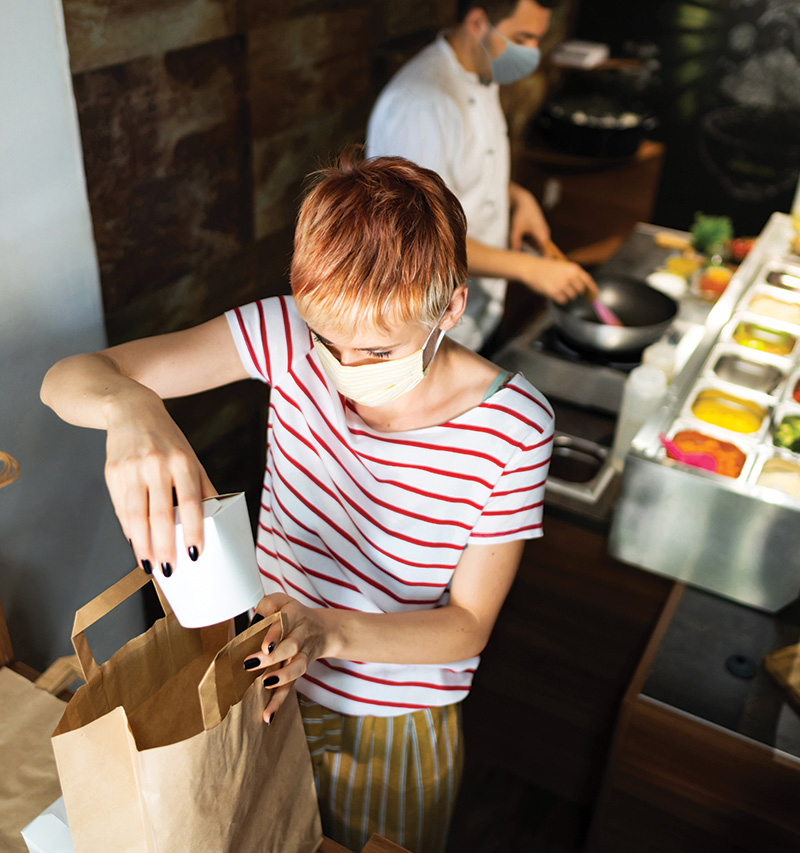
“If you were doing 15% to 20% delivery with 50% dining room, if you think that with 100% occupancy, that delivery will go down to zero, you are wrong,” says Vannini. “Your business has shown the dining public that it can achieve the same quality product in the comfort of their homes. You don’t know what folks will be comfortable with when dining gets up to 100%.”
He adds that delivery and takeout offer lower margin meals and should not be quickly abandoned – especially for restaurants with fewer than 100 seats. It’s not worth the loss of delivery business to go to full capacity indoors, Vannini says. “Keep the pedal to the metal on that delivery to make a lower-cost meal,” he says. “You have to continue to invest in your takeout and delivery. If there’s one thing I have learned (it’s that) your digital brand is just as important now, if not more, than your physical structure.”
Other consultants are not as sure. Beatrice Stein, a New York City-based restaurant consultant, imagines that post-COVID dining will be like the Roaring Twenties. “Many of the things we have been doing this year will fall by the wayside because I think people want to be out and sociable,” she says. “I think we will see a drop in things like meal kits and delivery. Eating out will become more desirable.”
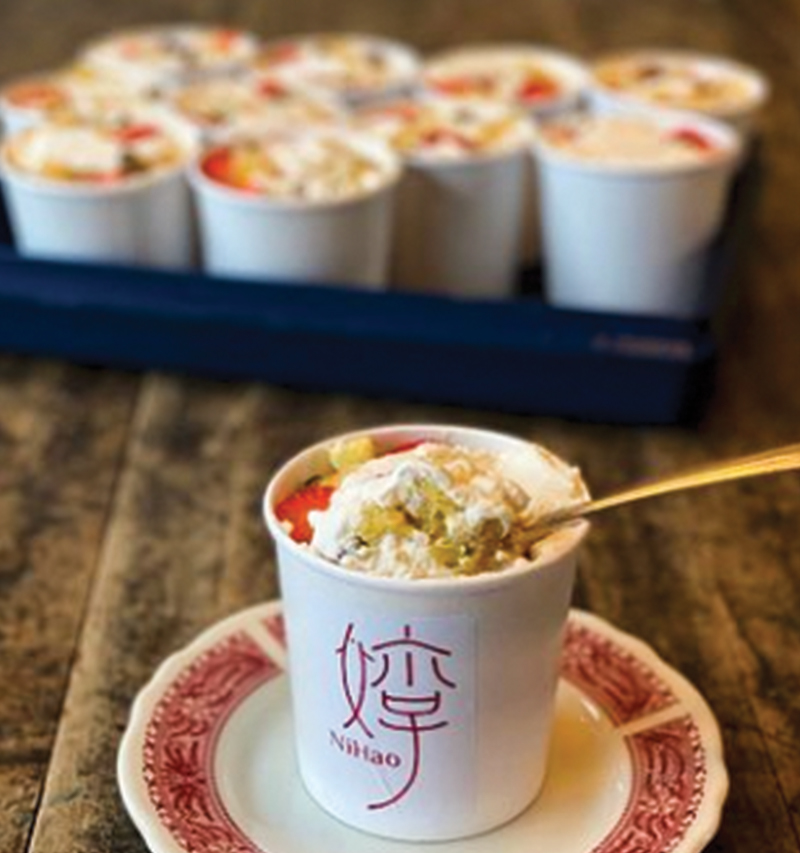
Dan Kluger, the chef and owner of Loring Place in Manhattan’s Greenwich Village, says he will continue offering takeout and delivery, even when he reaches full capacity indoors and outdoors. “We will keep it up as long as possible,” he said. “We invested a ton of money in building it out. I certainly feel like I am taxing the team with all these different things, but everyone is on board to survive. We will move forward and try to find the sweet spot and fine tune the recipe for success, not throw everything against the wall to see what sticks.”
Kate Edwards, a New York City-based restaurant consultant, advises operators to look at the new offerings and examine which create dissonance for that full-service experience. Delivery folks walking through a restaurant during service is not ideal, nor is taxing a kitchen that slows service or leads to poor prep. “When does the takeaway literally take away from your diner’s experience?” she asks.
Her preference leans toward prioritizing in-person dining, because, she says, it is the main reason many people are in this business in the first place. “The point of hospitality is building relationships and interacting and creating a community,” she says. “Restaurants are built on in-person connections. So the idea is to maintain that in-person guest experience, while making money for your business.”
 STEP 3: Streamline Menus
STEP 3: Streamline Menus
Delivery, takeout and on-premise indoor and outdoor dining can tax a staff. One way to lighten the load is to streamline and simplify menus. That can mean carefully curating the list of appetizers and entrées and reducing complexity of the dishes.
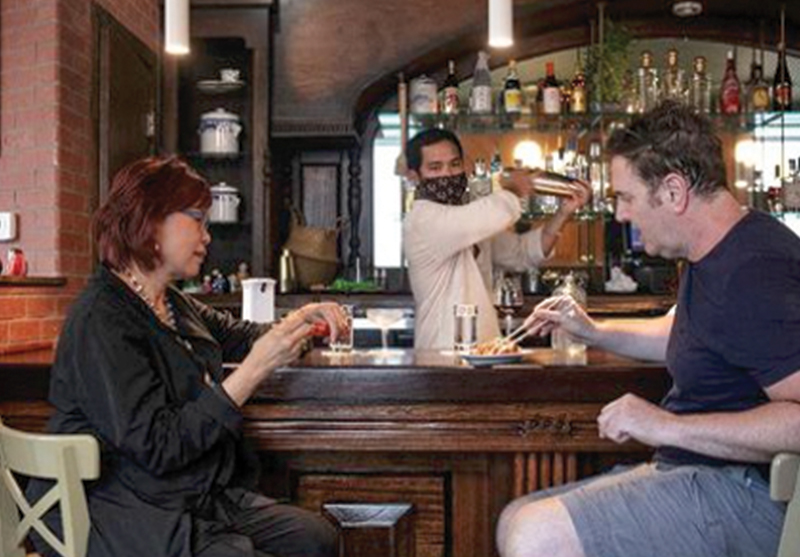
For some operators, the chance to rethink their menus has been one of the few silver linings in an otherwise dark cloud. “This has been a time for reinvention and there is a lot of freedom in that,” says Barbara Sibley, who runs several concepts in New York City (see sidebar on opposite page). Sibley not only streamlined her menu, doing more customer-driven specials, but also said goodbye to signatures that had previously been untouchable, a process she has thoroughly enjoyed. “It has been liberating to play with new dishes and have this huge surge of creativity,” she says.
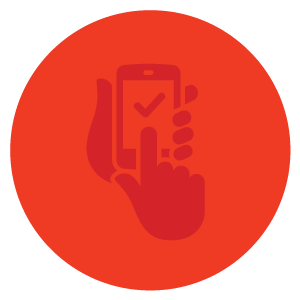 STEP 4: Maximize Digital Communication
STEP 4: Maximize Digital Communication
With the daily shifts in operations, many operators emphasize they have learned the critical importance of regular customer communication. “Social media ended up playing a big role for us,” says Pichet Ong, who opened Nihao in Baltimore in the middle of the pandemic. Images of food and prep, as well as videos of the patio and outdoor patio on various channels, provided a link to guests.
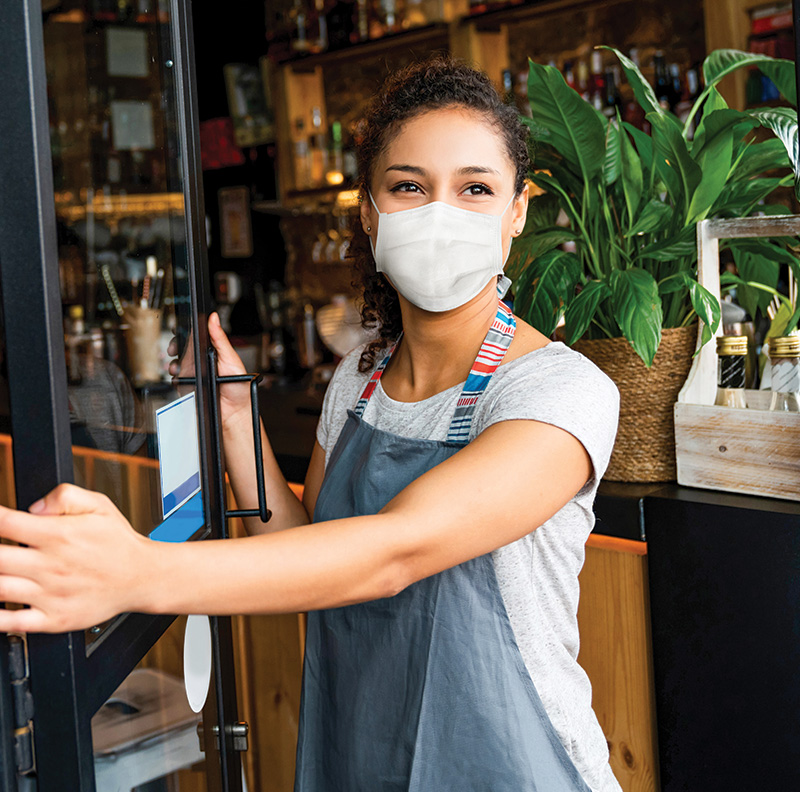
Newsletters and email marketing can also allow operators to dig into real-time customer behaviors and preferences. “You have to understand your customer – who they are, what they want, what they are buying, what their comfort levels are,” says Edwards. “And if you don’t know that, find out. Send a survey, write a newsletter and invite a conversation; engage your customers on social media. It is crucial for your business to understand your customers better.”
Robust communications go hand in hand with an operator’s digital ecosystem, says Andrew Jaffe, CMO of Snooze A.M. Eatery, a rapidly growing breakfast and brunch restaurant concept based in Denver. “For restaurant companies to thrive in this new world, they must have a vision for their technology stack,” he says. “It’s the central nervous system of your data collection, and it will allow you to connect and communicate in a more authentic way with guests.”
While restaurants may not have the budget for marketing or advertising, Jaffe says not to underestimate the value of delivery data. “Every time a guest orders, it is a chance to learn more about them,” he says. “Ordering is an opportunity to engage with your guests every day, and that gives you a platform
to communicate. That has been a positive consequence of COVID.”
Likewise, digital communication through apps and software that allow employees to reach managers and each other is more important than ever for scheduling and trading shifts, especially as staffing expands and constricts in times that remain uncertain.
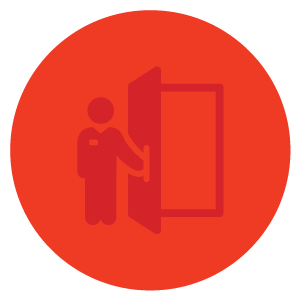 STEP 5: Remain Nimble
STEP 5: Remain Nimble
Predictions about dining habits are just that, predictions, which is why all experts agree that the only constant is change. “My advice is to learn quickly and fail cheaply,” says Snooze’s Jaffe, who changed his business, adding takeout, delivery, meal kits and a new ordering app during the pandemic. What comes next, he says, is a commitment to evolution. “We need to continue to be open-minded, nimble and innovative because there is still some change on the horizon.”
So that staff doesn’t feel yanked around, he suggests making them a part of the process. “As restaurant professionals, we are trained on process and repetition, so change can be difficult,” he says. “One of the lessons I learned is to give my staff the ‘why’ behind what we are doing, and why we think it will impact the business.” As a team, he says, they have learned to recognize that stumbles are OK. “As long as we can apply them and learn from those mistakes,” he says. “We have learned to embrace innovation. It is critical to surviving, especially when every day presents different challenges.”
Matan Hammer, CEO of Westville, a multi-unit independent restaurant based in New York City, added DIY cocktails and the expanded delivery and takeout program during the pandemic. Now, he says, is the time to continue to listen and remain innovative. “Our mission is to make people feel as protected as possible and to know we care,” he says. “We have learned you have to listen and to be flexible and dynamic. That is the only way forward.”
How One Restaurateur Does It All
Barbara Sibley changed the staffing hierarchy to remain many things to many people
Servers who cook? Waiters who wash dishes? Bussers who check in guests and take temperatures? A need for more flexible and fluid staffing during the pandemic has forced some operators to rethink and eliminate the restaurant hierarchy.
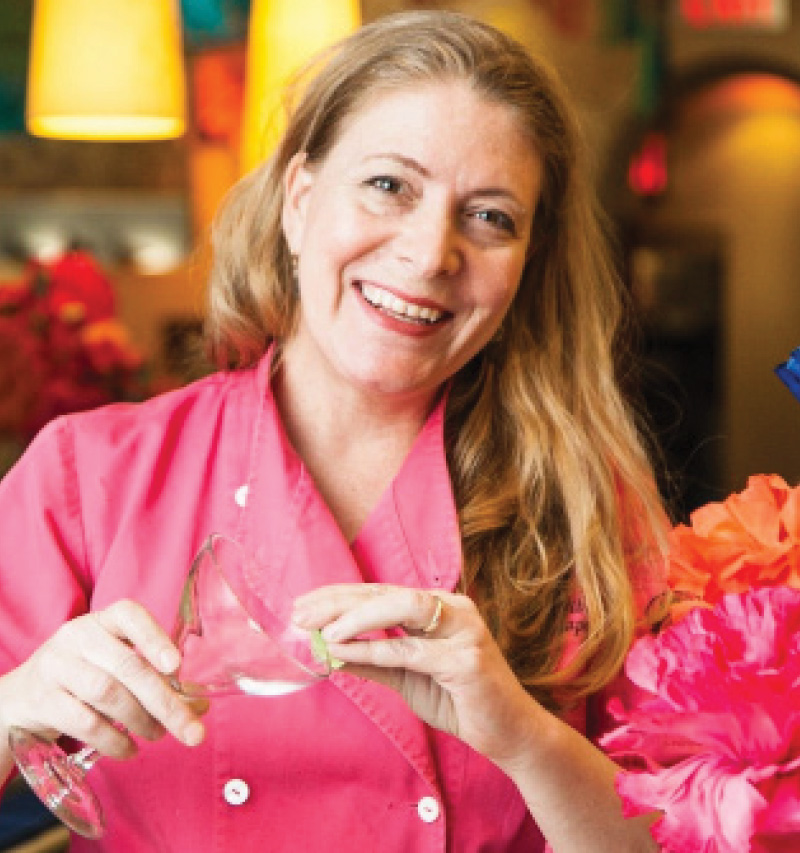
That’s the path Barbara Sibley chose. She runs three concepts in New York City – La Palapa, La Palapa Tacos at the Gotham Market and Vanderbilt Hall and the Holiday Cocktail Lounge. She pivoted during the shutdown, adding taco kits, takeaway, delivery and groceries. When the dust settled on her patchwork business model, a new way of staffing emerged, one grounded in equity that effectively abandoned the front and back of house divide.
“I eliminated the labor hierarchy, so there are no managers, no dishwashers, no bussers, no cooks, no servers,” explains Sibley. This means her waiters cook, her cooks serve, and everyone busses tables and does dishes. “We cross-train to promote people to more responsibility, and everyone has to do everything,” says Sibley. “It has been liberating.”
The new formula has allowed Sibley to offer more shifts. “With such a small staff I can say, I don’t have a shift for you on the floor, but you can do a kitchen shift,” she says. “So I keep people who need the work and put them wherever there is a need.”
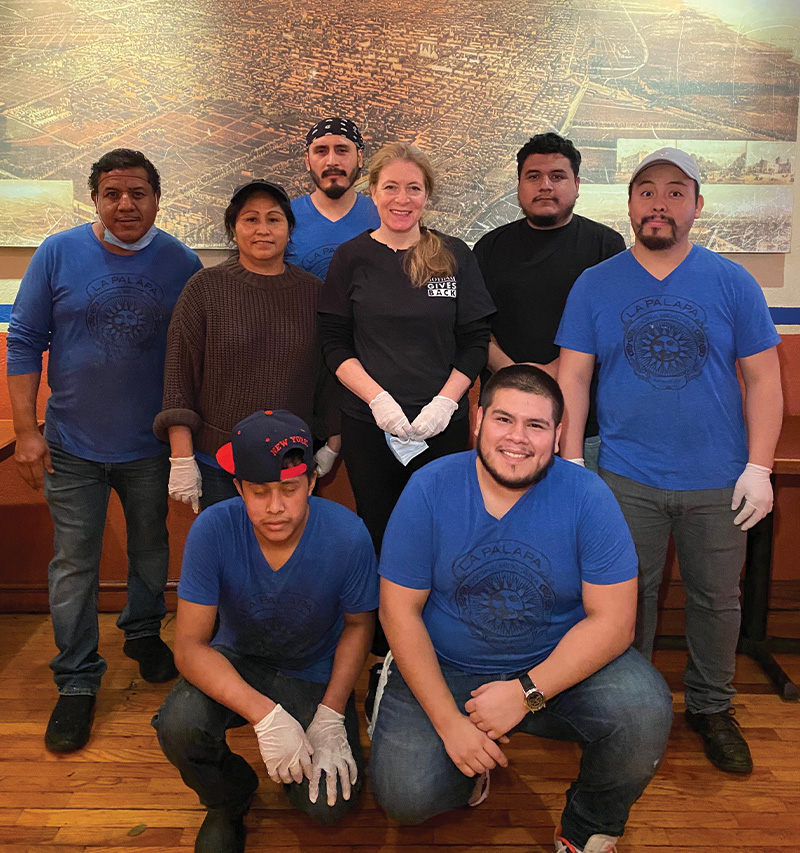
Sean Umstead and Michelle Vanderwalker, co-owners behind Kingfisher bar in Durham, North Carolina, have followed a similar model. Their bar was not allowed to open at all during COVID, so they did a full pivot in August, debuting a new outdoor burger concept called Queen Burger by turning their parking lot into an outdoor burger bar serving pre-bottled outdoor cocktails like strawberry margaritas and hibiscus daiquiris.
Rather than hire new staff, they just brought on a head chef and then turned to their roster of craft cocktail makers, who they trained to become burger cooks and servers. “Everyone does everything from prep to cooking to dishes, and everyone is an equal player,” he says. “My bartenders are grilling burgers.”
Once bars were allowed to reopen indoor service at 30% in February, they reopened Kingfisher, but continued to run their burger bar, splitting their fully fluid staff between outdoor and indoor service.
The model has done more than make staffing easier. Sibley says the shift has also meant a more equitable restaurant environment. “It is really working well, and I don’t see any reason to go back to the way things were before.”


